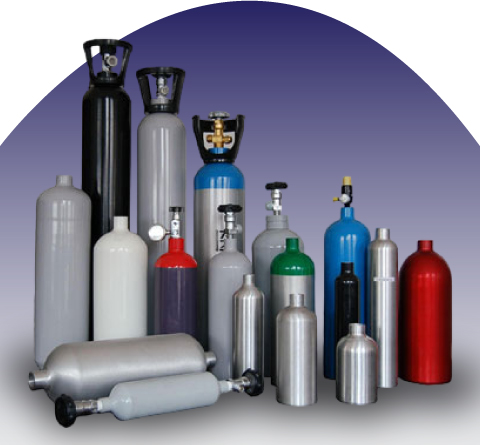Helium
Helium & Liquid Helium

Helium
Helium is a colorless, odorless, and non-toxic gas that is widely used in a variety of industrial, commercial, and laboratory applications. It is the second most abundant element in the observable universe and is present in the Earth’s atmosphere in trace amounts.
There are several grades of helium available, each with different specifications and intended for different uses. The main grades include:
- Industrial grade helium: This is the most common grade of helium, it is used for a wide range of industrial applications such as leak detection, welding, and cooling.
- Medical grade helium: This grade of helium is used in medical applications such as breathing mixtures for deep sea diving, MRI scanners, and other medical devices.
- High-purity grade helium: This grade of helium is used in applications that require a high level of purity, such as semiconductor manufacturing, gas chromatography, and other laboratory applications.
Industrial Applications
-
Helium is commonly used as a lifting gas in balloons and airships, due to its low density and non-reactivity.
Helium is also used as a coolant in nuclear power plants and in cryogenics, where its low boiling point and low heat transfer properties are useful. -
Helium is also used in welding and cutting as a protective gas, to prevent oxidation and other chemical reactions.
-
Helium is also used in semiconductor manufacturing, where its low reactivity and high thermal conductivity make it an ideal gas for creating a clean and stable environment for the manufacturing process.
Medical Applications
Helium is also used in medicine, particularly in breathing mixtures for deep sea diving, MRI scanners, and other medical devices.
It’s important to follow the safety guidelines and regulations for the handling, transportation and storage of the product, as well as the specific grade of helium you are using.
As with any gas, it is important to handle Helium with care and in accordance with the proper safety guidelines, to ensure the safety of the workers and the surrounding environment.
Handling and storage:
Ammonia must be handled with care due to its toxicity, flammability and corrosiveness.
It should be stored in a well-ventilated area, away from heat sources and flames.
Ammonia should be transported in specially designed containers, and the cylinder valves should be closed and not leaking before transporting.
It is important to follow the safety guidelines and regulations for the handling, transportation and storage of Ammonia, as well as wearing personal protective equipment like mask, goggles, gloves, and more.
Helium
Helium is a colorless, odorless, and non-toxic gas that is widely used in a variety of industrial, commercial, and laboratory applications. It is the second most abundant element in the observable universe and is present in the Earth’s atmosphere in trace amounts.
There are several grades of helium available, each with different specifications and intended for different uses. The main grades include:
- Industrial grade helium: This is the most common grade of helium, it is used for a wide range of industrial applications such as leak detection, welding, and cooling.
- Medical grade helium: This grade of helium is used in medical applications such as breathing mixtures for deep sea diving, MRI scanners, and other medical devices.
- High-purity grade helium: This grade of helium is used in applications that require a high level of purity, such as semiconductor manufacturing, gas chromatography, and other laboratory applications.
Industrial Applications
Helium is commonly used as a lifting gas in balloons and airships, due to its low density and non-reactivity.
Helium is also used as a coolant in nuclear power plants and in cryogenics, where its low boiling point and low heat transfer properties are useful.Helium is also used in welding and cutting as a protective gas, to prevent oxidation and other chemical reactions.
Helium is also used in semiconductor manufacturing, where its low reactivity and high thermal conductivity make it an ideal gas for creating a clean and stable environment for the manufacturing process.
Medical Applications
Helium is also used in medicine, particularly in breathing mixtures for deep sea diving, MRI scanners, and other medical devices.
It’s important to follow the safety guidelines and regulations for the handling, transportation and storage of the product, as well as the specific grade of helium you are using.
As with any gas, it is important to handle Helium with care and in accordance with the proper safety guidelines, to ensure the safety of the workers and the surrounding environment.
Kindly Note
As with any gas, it is important to handle Helium Gas with care and in accordance with the proper safety guidelines, to ensure the safety of the workers and the surrounding environment.